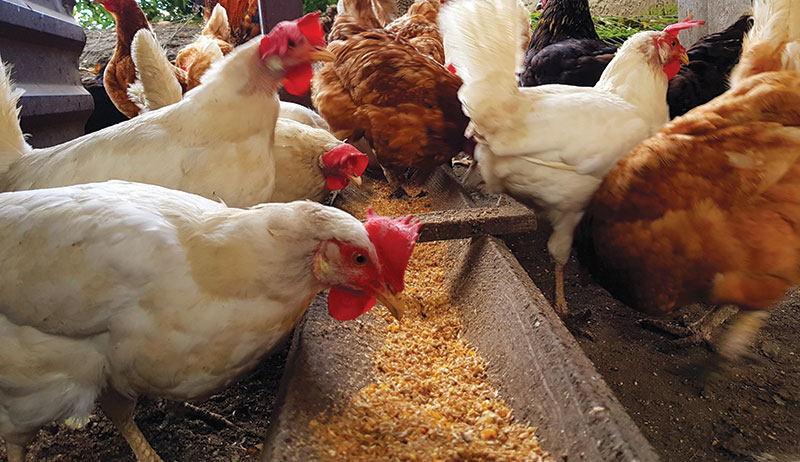Raising chickens can be both a rewarding and cost-effective endeavor when done correctly. One of the most significant expenses for chicken keepers is feed. Luckily, understanding how to make cheap chicken feed can help keep costs low while ensuring your chickens remain healthy and happy. This guide provides extensive, practical advice on creating a cost-effective chicken feed mixture that suits your flock’s needs.

Ingredients for Cheap Chicken Feed
Making your chicken feed can save you a lot of money. Here’s a list of basic ingredients for cheap chicken feed:
- Whole or cracked corn
- Soybeans (roasted or meal)
- Wheat
- Oats
- Barley
- Sunflower seeds
- Fish meal
- Vitamin and mineral supplements

Why Quality Ingredients Matter
While it’s tempting to cut corners, maintaining a balance of quality ingredients in your feed is crucial. It ensures your chickens get the essential nutrients they need for growth, egg production, and overall health. For more detailed information, learn more here.
The Right Balance
When mixing your feed, aim for a balance of protein, carbohydrates, and fats. Chickens need about 16-20% protein depending on their age and production stage. For a reliable protein source, consider adding fish meal or soybean meal to your mix.

Step-by-Step Guide to Making Cheap Chicken Feed
Step 1: Gather Your Ingredients
Start by gathering all the ingredients mentioned. Make sure they are fresh to maintain nutritional quality.
Step 2: Measure Accurately
Accurate measurement ensures that each batch of feed is consistent. Use a kitchen scale for precision.
Step 3: Mix Ingredients
In a large bin, thoroughly mix all the ingredients. Ensure that the vitamin and mineral supplements are evenly distributed.

How Much Feed Do Chickens Need?
An essential aspect of how to make cheap chicken feed is knowing how much feed your chickens need. On average, a chicken will eat about 0.25 pounds of feed per day. Adjust this amount based on your flock’s size and needs.
Consider the Season
During molting and winter months, chickens require more protein; adjust your feed accordingly by adding extra protein-rich ingredients like soybeans.
Storage Tips
Proper storage extends the life of your feed. Store it in a cool, dry place to prevent spoilage. Airtight containers can help keep pests away.
DIY Feed Bins
Consider creating DIY feed bins from large plastic containers to save on purchase costs. Make sure these bins are washable to maintain hygiene.
Cost Analysis
Making your feed may seem daunting initially, but the savings are significant over time. Calculate the cost per pound of your homemade feed and compare it to commercial feed to see your savings.
Additional Savings
Look for bulk buying options and local farm cooperatives. Many places offer discounts for bulk purchases, which can significantly reduce costs.
Supplemental Feeding
An integral part of how to make cheap chicken feed is knowing what additional treats are beneficial. Supplement your feed with kitchen scraps and garden waste like vegetable peels and fruit scraps.
Safe Treats
Not all kitchen scraps are safe. Avoid feeding your chickens raw potatoes, chocolate, and avocados.
Common Mistakes to Avoid
Even seasoned chicken keepers can make mistakes. Some common pitfalls include using stale ingredients, incorrect protein balance, and inadequate mineral supplements.
Solutions
Regularly check the freshness of your ingredients, consult with a veterinarian for dietary advice, and invest in a good scale to ensure accurate measurements.
Expert Advice and Resources
There are numerous online communities and resources available for poultry enthusiasts. Websites like Mini Chicken Breeds and Black Chicken Breed offer valuable insights.
Join Forums
Join online forums and engage with fellow chicken keepers. These platforms offer advice, share experiences, and provide moral support.
Health Benefits
Making your feed allows control over your chickens’ diet, leading to improved health, better egg production, and greater resistance to diseases.
Regular Health Checks
Combine a healthy diet with regular health checks to maintain your flock’s well-being. If you notice any health issues, consult a veterinarian immediately.
FAQ Section
What is the best protein source for chicken feed?
The best protein sources are fish meal and soybean meal. These ingredients provide balanced nutrition and are cost-effective.
How do I store homemade chicken feed?
Store in airtight containers in a cool, dry place to prevent spoilage and keep pests away.
Can I use kitchen scraps in my feed?
Yes, but avoid harmful foods like raw potatoes, chocolate, and avocados.
Conclusion
Learning how to make cheap chicken feed is a valuable skill for any poultry enthusiast. It ensures your flock is well-fed, healthy, and costs remain manageable. With careful planning and a bit of effort, you can create a nutritious, balanced diet that will keep your chickens happy and productive.
As an Amazon Associate, I earn from qualifying purchases.









